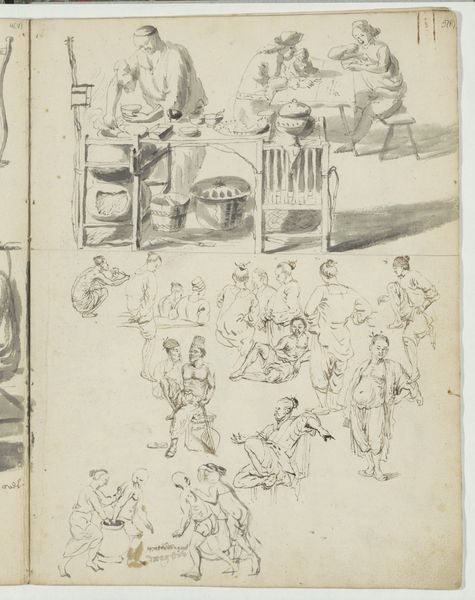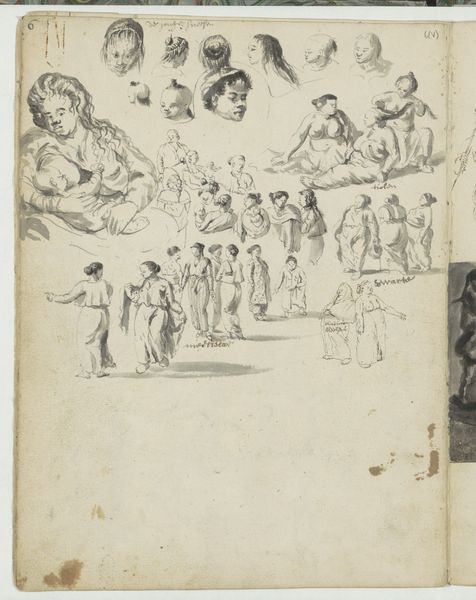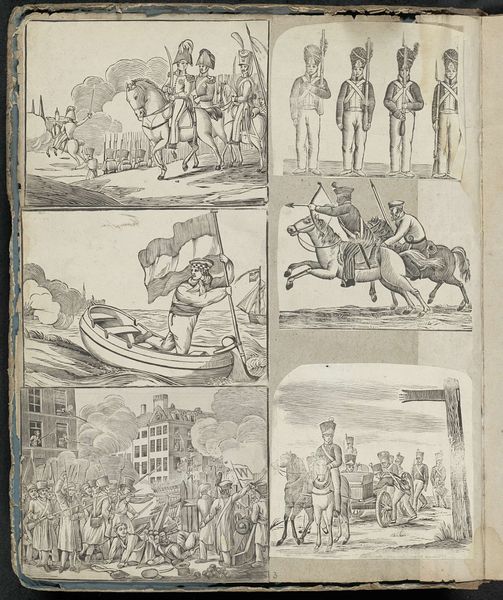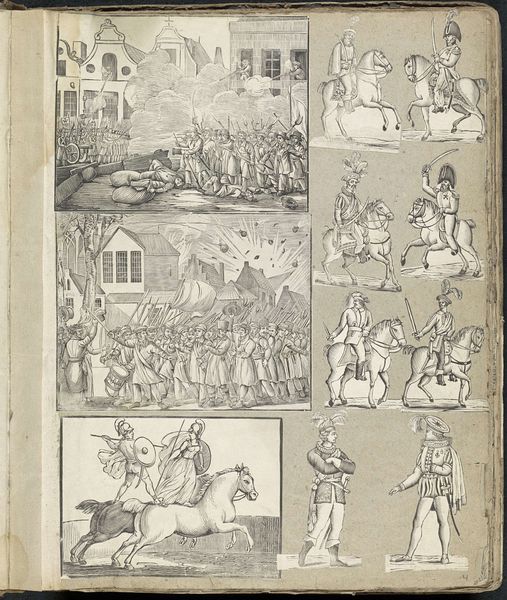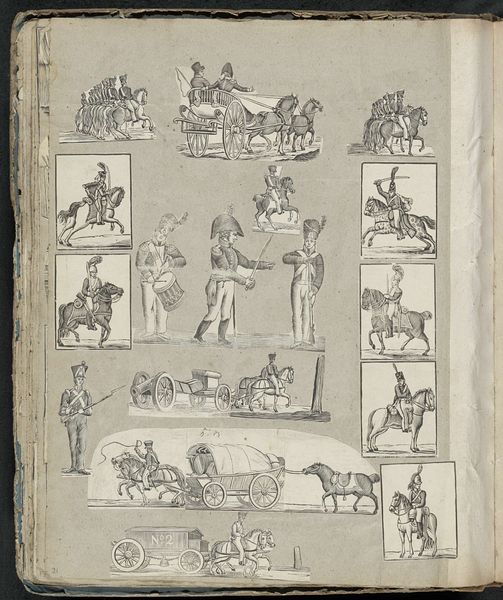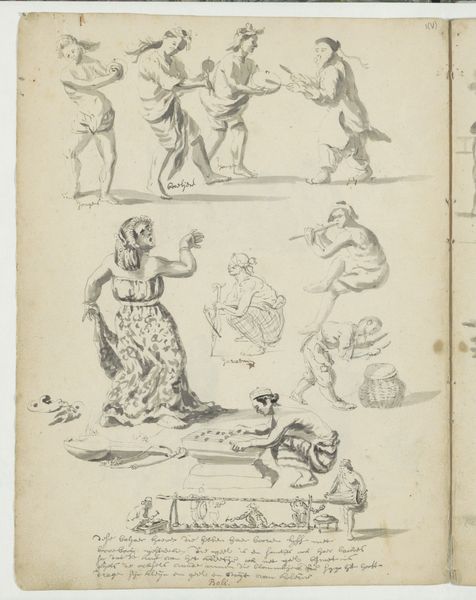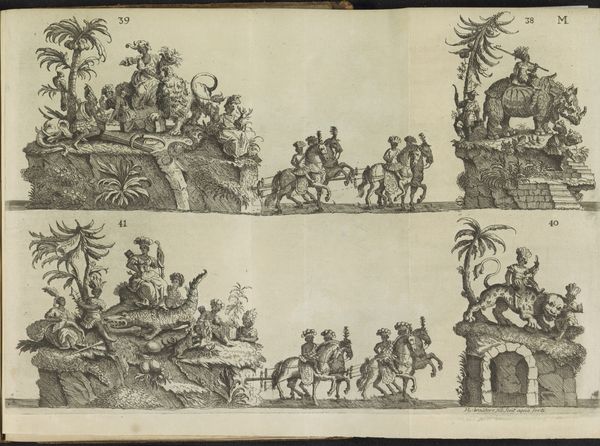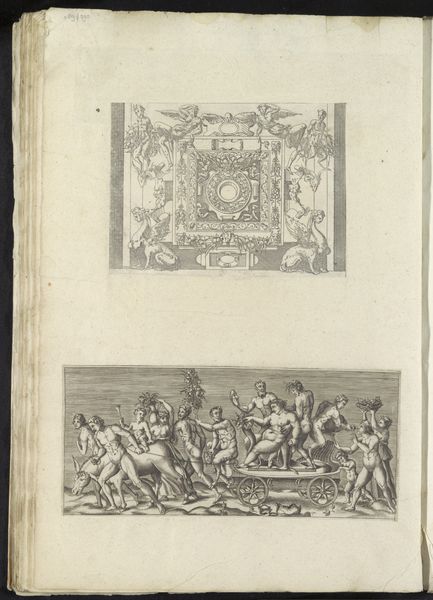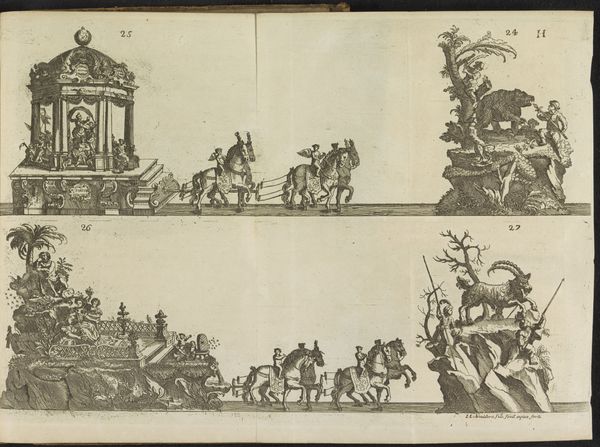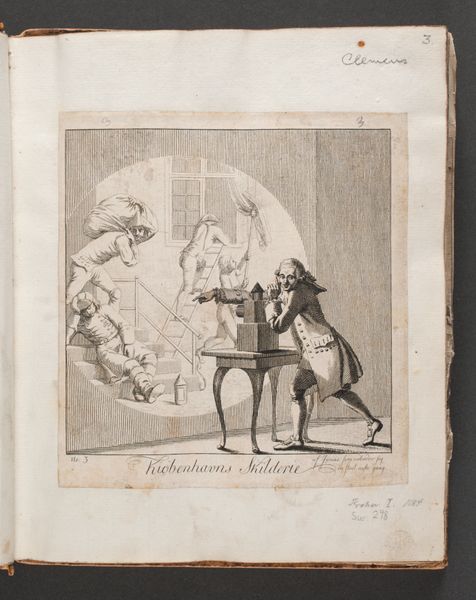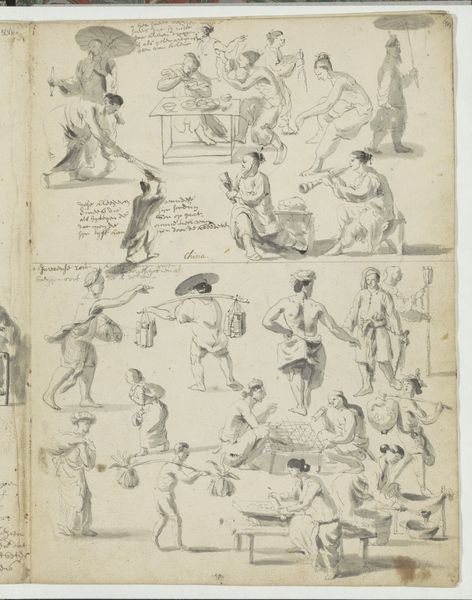
drawing, ink
#
drawing
#
narrative-art
#
dutch-golden-age
#
landscape
#
figuration
#
ink
#
genre-painting
Dimensions: height 295 mm, width 232 mm
Copyright: Rijks Museum: Open Domain
Editor: This drawing by Wouter Schouten, made around 1660, is titled "Ambonezen, een Makassaar en een optocht van paarden", which translates to "Ambonese, a Makassar, and a procession of horses." It’s rendered in ink, and it almost feels like a collection of ethnographic sketches. I'm struck by the way different groups of people and animals are presented, and how the scenes are juxtaposed. How do you interpret this work, especially given its historical context? Curator: Well, it’s vital to view this drawing through the lens of Dutch colonial expansion in the 17th century. Schouten was a surgeon with the Dutch East India Company, and works like this offer insights into how the Dutch perceived and documented the people and landscapes they encountered. Notice how some figures are depicted with careful detail, while others seem almost caricatured. What does that tell us about the power dynamics at play? Editor: It definitely suggests an unequal gaze. The Dutch figures, if they're even present here, seem to be absent from this close depiction, creating a stark contrast with how the others are represented. What purpose would such depictions serve? Curator: It reinforced a sense of European superiority and helped justify colonial endeavors. By portraying the indigenous populations in a particular way, it normalized their subjugation and exploitation within the Dutch colonial project. We also have to remember this image itself circulates within particular networks of power—as a drawing by a VOC employee, destined for consumption back home, what function is it performing? Editor: So, the drawing is less a neutral record and more a tool of colonial ideology. Curator: Precisely. The act of observation and documentation becomes an assertion of control and a construction of “otherness." And the procession of horses, heavily laden, serves as a visual metaphor for the extraction of resources. It raises important questions about representation, power, and the role of art in shaping historical narratives. Editor: That's a perspective I hadn't fully considered before. I now see how loaded images like this can be and how important it is to unpack them. Curator: Exactly. Analyzing the visual language helps us understand the complex and often troubling history behind seemingly straightforward depictions.
Comments
No comments
Be the first to comment and join the conversation on the ultimate creative platform.
